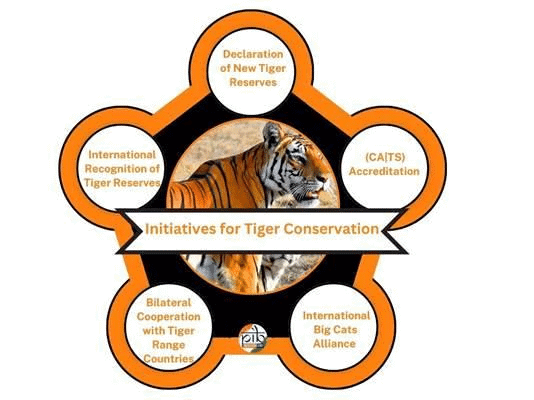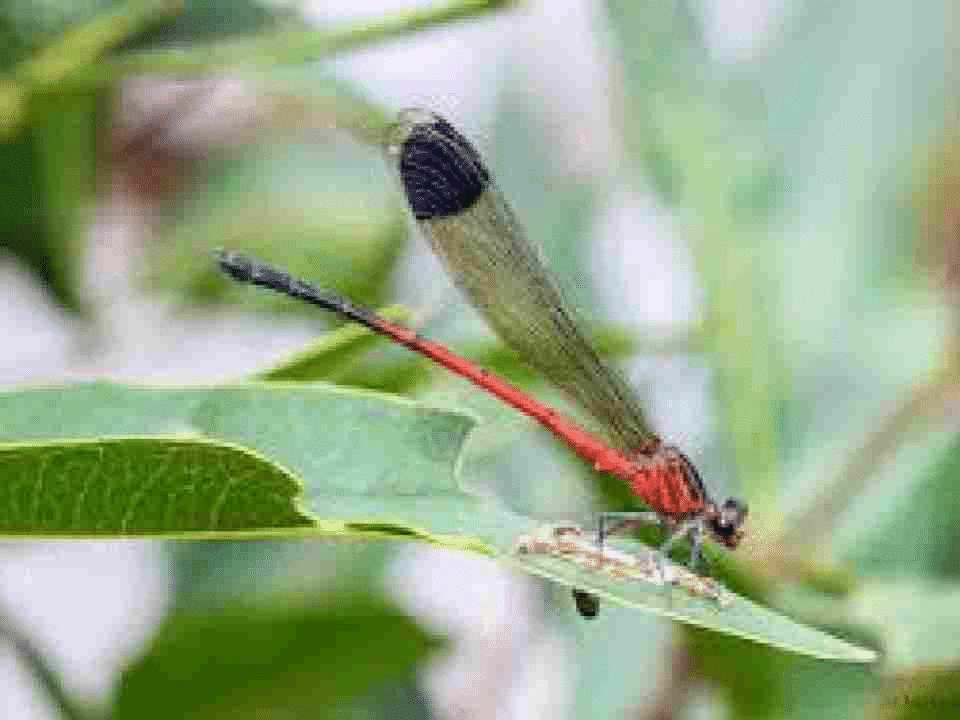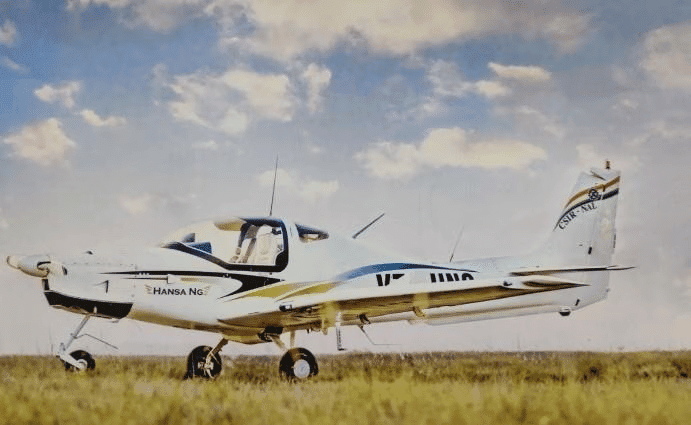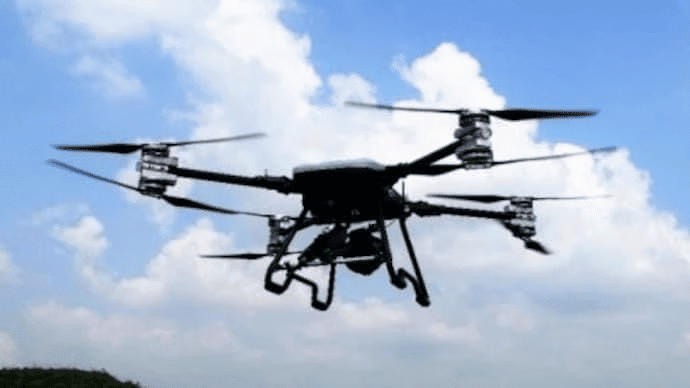Weekly Current Affairs (1st to 7th April 2025) | General Test Preparation for CUET UG - CUET Commerce PDF Download
India-U.S. HADR Exercise Tiger Triumph
 Why in News?
Why in News?
- The fourth edition of the India-U.S. tri-service Humanitarian Assistance and Disaster Relief (HADR) Exercise, named Tiger Triumph, is scheduled to take place from April 1 to April 13, 2025. This exercise aims to enhance collaboration and coordination between the armed forces of India and the United States in disaster response operations.
Key Takeaways
- The primary objective of Tiger Triumph is to improve interoperability during HADR operations.
- It will focus on developing Standard Operating Procedures (SOPs) for a Combined Coordination Centre (CCC).
- Participating forces will include various naval, air, and ground units from both countries.
Additional Details
- Participating Forces: The Indian contingent comprises several naval and air assets, including the Indian Naval Ships Jalashwa, Gharial, Mumbai, and Shakti, along with troops from the 91 Infantry Brigade and the 12 Mechanised Infantry Battalion. Air support will be provided by a C-130 transport aircraft and MI-17 helicopters. The U.S. will send the USS Comstock and USS Ralph Johnson, alongside troops from the U.S. Marine Corps Forces (Pacific).
- Harbour Phase Activities: Taking place in Visakhapatnam from April 1 to 7, this phase will begin with an opening ceremony featuring a joint flag parade aboard INS Jalashwa. Participants will engage in training visits, expert exchanges, sports events, and social interactions to foster camaraderie.
- Sea Phase Operations: Following the Harbour Phase, the exercise will transition to maritime operations off Kakinada, including Maritime, Amphibious, and HADR operations. A joint command and control centre will be set up at the Kakinada naval enclave for efficient coordination.
- Medical Support Initiatives: A joint medical camp will be established, where the Indian Air Force's Rapid Action Medical Team (RAMT) will work alongside the U.S. Navy medical team to provide crucial medical assistance, emphasizing the humanitarian aspect of Tiger Triumph.
The Tiger Triumph exercise represents a significant step towards enhancing the disaster response capabilities of both India and the U.S., fostering improved military cooperation while focusing on humanitarian assistance and relief efforts.
ZooWIN Platform
 Why in News?
Why in News?
- India is currently facing significant health issues due to rabies and snakebite fatalities. To address these challenges, the government has launched ZooWIN, a digital platform designed for real-time monitoring of the stocks of anti-rabies vaccines and anti-snake venom. This initiative aims to improve healthcare delivery nationwide and reduce mortality rates associated with these critical conditions.
Key Takeaways
- Rabies results in approximately 60,000 deaths globally each year, with India contributing about 36% of that total.
- Snakebites account for around 50,000 fatalities annually in India.
- ZooWIN will centralize healthcare data, enhancing collaboration among healthcare providers, municipal authorities, and veterinary services.
Additional Details
- Functionality of ZooWIN: The platform operates similarly to the Co-WIN and U-WIN systems, utilizing the existing infrastructure of the Electronic Vaccine Intelligence Network (eVIN) for effective vaccine stock tracking.
- The objective is to ensure timely administration of vaccines to those who suffer from animal and snake bites, thereby increasing the availability of necessary treatments in healthcare facilities.
- Pilot Implementation: ZooWIN will be initially launched in five states: Delhi, Madhya Pradesh, Assam, Puducherry, and Andhra Pradesh. Training sessions for state health officials are already underway to ensure proficient use of the platform.
- Enhancing Public Awareness: The initiative aims to combat inadequate public awareness and low dog vaccination rates, which have worsened the rabies situation in India. ZooWIN will provide information access regarding rabies and snakebite treatments, particularly in rural and underserved areas.
- Role of Partnerships: Developed by the National Centre for Disease Control (NCDC) and supported by the United Nations Development Programme (UNDP), this collaboration is vital for the successful deployment of ZooWIN and achieving broader health objectives related to rabies and snakebites.
In conclusion, the ZooWIN platform represents a critical step forward in managing rabies and snakebite fatalities in India. By leveraging technology and improving public awareness, it aims to significantly enhance healthcare outcomes related to these health crises.
India’s Defence Exports 2025
 Why in News?
Why in News?
- On April 2, 2025, it was reported that India achieved a significant milestone in its defence exports, reaching a remarkable ₹23,622 crore during the Financial Year 2024-25. This figure marks a notable growth of 12.04% compared to the previous year, driven primarily by increased sales in artillery shells, guns, and small arms. This growth underscores India's expanding influence in the global defence market.
Key Takeaways
- Defence exports increased by ₹2,539 crore compared to FY 2023-24.
- The Defence Public Sector Undertakings (DPSUs) saw a substantial 42.85% rise in their export figures.
- The private sector contributed ₹15,233 crore while DPSUs accounted for ₹8,389 crore of the total exports.
Additional Details
- Export Authorisation: The Department of Defence Production issued 1,762 export authorisations in FY 2024-25, up from 1,507 in the previous year. This growth of 16.92% indicates a streamlined process for exporters.
- Policy Reforms: Recent policy changes have simplified licensing procedures and extended the validity of licenses, encouraging growth in defence exports.
- International Market Reach: Defence products were exported to approximately 80 countries, with the US, Israel, and Germany being the largest importers, reflecting a shift towards self-reliance in defence production.
Looking ahead, Defence Minister Rajnath Singh has set ambitious targets, aiming for defence exports to exceed ₹30,000 crore in FY 2025-26 and ₹50,000 crore by 2029. The Modi government initially set a target of ₹35,000 crore for aerospace and defence goods over a five-year period. Furthermore, ongoing global conflicts, such as the Russia-Ukraine war and the Israel-Hamas conflict, have increased demand for defence products, providing opportunities for Indian manufacturers. The focus is now on indigenous production, supported by government initiatives to strengthen the domestic defence industry.
Geopolitical Tensions in the Arctic Region
Why in News?
- The Arctic region is currently experiencing heightened tensions among various global powers. The rapid effects of climate change are leading to the melting of ice caps, which has unveiled previously inaccessible natural resources and new shipping routes. This development has resulted in a surge of military posturing and territorial claims by Arctic nations, highlighting the absence of a comprehensive international treaty to manage these resources and maintain peace, unlike the Antarctic region.
Key Takeaways
- Climate Change Impact: The melting Arctic ice is exposing valuable natural resources.
- Territorial Control: Eight countries have claims in the Arctic, leading to increased territorial disputes.
- Military Presence: There is a notable increase in military activities and strategic interests among Arctic nations.
- New Trade Routes: The melting ice is opening up potential new trade routes that could reshape global commerce.
Additional Details
- Climate Change and Resource Accessibility: The ongoing climate crisis is accelerating the melting of Arctic ice, revealing significant natural resources, including an estimated 13% of the world's undiscovered oil reserves and 30% of untapped natural gas reserves, which are critical for global energy security and economic growth.
- Territorial Claims and Governance: The Arctic region is governed by eight countries: Canada, Denmark, Finland, Iceland, Norway, Russia, Sweden, and the United States, all of which are part of the Arctic Council focused on environmental protection and indigenous rights. The United Nations Convention on the Law of the Sea (UNCLOS) regulates maritime claims, allowing nations to extend their claims based on the natural prolongation of their continental shelf, although overlapping claims have intensified tensions.
- Military Posturing: The military presence in the Arctic is increasing, with Russia deploying a fleet of icebreakers essential for navigating icy waters. The U.S. has shown interest in Greenland, raising tensions with Denmark. Additionally, disputes over the Northwest Passage between Canada and the U.S. have the potential to escalate into military confrontations.
- International Reactions and Alliances: The geopolitical landscape is evolving, with NATO members expressing concern over Russian military activities. The accession of Sweden and Finland to NATO has led to intensified military exercises in the region, while China has positioned itself as a 'Near-Arctic State', investing in Arctic capabilities, including a nuclear-powered icebreaker.
- Economic Implications of New Trade Routes: The melting ice is creating new commercial trade routes, such as the Northeast Passage, which could significantly shorten shipping distances between East Asia and Europe. However, this opportunity requires cooperation between Russia and China, though Russia remains cautious about granting access to its Arctic ports.
As temperatures in the Arctic continue to rise, the potential for escalating tensions remains significant. Nations are actively taking steps to assert their territorial claims, and military exercises are becoming more frequent. The strategic importance of the Arctic will likely draw increasing global attention, leading to heightened competition and the potential for conflict over valuable resources and disputed territories.
Tigers Outside Reserves Initiative
 Why in News?
Why in News?
- Recent reports reveal that nearly 30% of India's estimated 3,682 tigers are located outside designated reserves. To tackle this issue, the Ministry of Environment, Forest and Climate Change is initiating the project titled "Tigers Outside Tiger Reserves." This initiative, discussed in a recent National Board for Wildlife meeting, has received preliminary approval and is slated to receive funding of Rs 176.45 crore until 2026-27.
Key Takeaways
- The project aims to monitor tiger populations outside reserves and reduce poaching.
- Community engagement and outreach are critical components of the initiative.
- Human-wildlife conflict is a significant concern that the initiative aims to address.
Additional Details
- Current Mechanism: Tigers outside reserves are primarily found in forests managed by state forest departments. When they leave protected areas, it can lead to conflicts with humans, livestock attacks, and increased poaching risks. This situation also pushes other predators, like leopards, closer to human settlements.
- Human-Wildlife Conflict: Regions such as Wayanad, Chandrapur, and Pilibhit face escalating human-wildlife conflicts due to tigers venturing outside reserves, resulting in livestock losses and potential human injuries or fatalities.
- Implementation Strategy: The National Tiger Conservation Authority (NTCA) will manage the project across 80 forest divisions in ten states, selected based on the all-India tiger estimation of 2022 and recent conflict trends.
- Funding: The Ministry is also seeking additional support from the National Compensatory Afforestation Fund Management and Planning Authority (CAMPA) to fund afforestation and wildlife conservation efforts, ensuring no overlap with existing Project Tiger initiatives.
- Statistics and Impact: Between 2020 and 2024, there were 378 reported fatalities due to tiger conflicts, with Maharashtra, Uttar Pradesh, and Madhya Pradesh recording the highest numbers. This data highlights the urgent need for effective conflict resolution strategies and improved monitoring of tiger populations.
- Geographical Distribution: India's tiger population spans various landscapes, including the Shivalik Hills, Terai plains, Central Indian Highlands, and the Sundarbans, with the largest populations found in the Central Indian Highlands and Eastern Ghats.
This initiative represents a crucial step towards enhancing the conservation of tigers outside reserves while addressing the challenges posed by human-animal conflicts. By focusing on community involvement and effective monitoring, the project aims to create a sustainable coexistence between tigers and local populations.
Section 40 of Waqf Act
Why in News?
- The Waqf Amendment Bill 2025, which was introduced in the Lok Sabha on April 3, 2025, proposes significant changes to the existing Waqf Act of 1995. The most controversial aspect of this bill is the proposed removal of Section 40, which has ignited a debate between the ruling coalition and opposition parties. Critics of the amendment argue that eliminating this section would weaken the authority of the Waqf Board, making it less effective.
Key Takeaways
- The Waqf Board manages properties donated for religious or charitable purposes in Islam.
- Section 40 grants the Board the authority to determine if a property is a Waqf property.
- Removal of Section 40 raises concerns about the Board's independence and authority.
Additional Details
- Waqf Board: A statutory body in India that oversees Waqf properties, ensuring their use aligns with donor intentions.
- Section 40: This section enables the Waqf Board to investigate properties suspected to be Waqf and make binding decisions unless challenged in a Waqf Tribunal.
- The Centre argues that removing Section 40 will enhance transparency and accountability in Waqf property management.
- Critics fear that without this section, the Board might lose control over property determinations, potentially leading to governmental overreach.
The proposed removal of Section 40 could significantly impact the governance of Waqf properties, raising essential questions about the balance of authority between the Waqf Board and government officials. The ongoing discussions around this amendment reflect broader concerns about property rights and the management of religious assets in India.
Euphaea Wayanadensis
 Why in News?
Why in News?
- On April 4, 2025, researchers announced the discovery of a new species of damselfly, Euphaea wayanadensis, in the Kerala region of India. This discovery contributes to the biodiversity of the Western Ghats, increasing the total number of odonate species in Kerala to 191 and to 223 in the Western Ghats.
Key Takeaways
- Taxonomy: Euphaea wayanadensis belongs to the family Euphaeidae.
- Initial Discovery: First sighted in 2013 at the Kalindi River in Wayanad.
- Misidentification: Initially misidentified as Euphaea pseudodispar.
- Confirmation: Distinct status confirmed through morphological and genetic studies.
Additional Details
- Distinctive Morphological Features:This species has notable characteristics, including:
- A longer black patch on its hind wing compared to related species.
- Broader and uninterrupted body stripes in males.
- Distinct structural traits in the male genital vesicle, aiding in species differentiation.
- Habitat and Behaviour:
- Thrives in fast-flowing streams with rocky beds and abundant aquatic vegetation.
- Typically found in evergreen and semi-evergreen forests along stream banks.
- Active year-round, with reduced activity during the dry months of March and April.
- Highly restricted habitat makes it vulnerable to climate change and habitat loss.
The discovery of Euphaea wayanadensis not only adds to the rich biodiversity of the Western Ghats but also highlights the importance of ongoing research in understanding and preserving delicate ecosystems.
Chandrayaan-3’s ChaSTE
Why in News?
- On April 4, 2025, it was announced that India’s lunar exploration mission, Chandrayaan-3, successfully landed on the Moon’s south pole on August 23, 2023. Among its key scientific instruments is the Chandra’s Surface Thermophysical Experiment (ChaSTE), which is designed to study the thermal properties of the lunar surface, a vital aspect for future exploration and understanding lunar conditions.
Key Takeaways
- ChaSTE aims to measure the vertical temperature profile of lunar regolith up to a depth of 100 mm.
- The experiment assesses thermal conductivity, essential for developing a detailed thermal profile of the Moon’s surface.
Additional Details
- Design and Functionality: The ChaSTE probe features ten Platinum Resistance Temperature Detectors (RTD Pt-1000 sensors) positioned at different depths. A ribbon heater near the tip facilitates active thermal conductivity experiments. The probe is made from a composite material to minimize heat interference while ensuring mechanical durability.
- Key Findings: ChaSTE delivered the first in-situ temperature profile from the Moon’s south polar region, revealing that surface temperatures could reach up to 70°C during the lunar day, which exceeded previous expectations. At a depth of 80 mm, temperatures were measured around -10°C, indicating a significant thermal gradient.
- Scientific Implications: The data collected by ChaSTE improves our understanding of how solar heat interacts with the lunar surface and offers insights into the potential preservation of volatiles such as water ice in permanently shadowed areas. This information is crucial for planning future lunar habitats and resource exploration missions.
- Operational Details: ChaSTE was deployed on August 24, 2023, after the Vikram lander touched down. The probe penetrated the regolith in stages, achieving a depth of 140 mm, and continuously collected temperature data at one-second intervals for one lunar day, equivalent to about 14 Earth days.
- Significance of ChaSTE: The groundbreaking data provided by ChaSTE contrasts with findings from earlier lunar missions that focused on equatorial regions. These results challenge existing thermal models and underscore the distinct characteristics of the Moon’s polar environment, which is vital for identifying stable subsurface locations for future exploration.
- Historical Context: Previous attempts to deploy similar thermal probes on other celestial bodies faced significant challenges. For instance, the European Space Agency’s Philae lander and NASA’s InSight mission encountered difficulties. ChaSTE’s innovative design, which incorporates a rotating mechanism for soil penetration, succeeded where previous missions had not.
The successful deployment and findings of the ChaSTE experiment represent a significant advancement in lunar science, providing essential data that will inform future exploration efforts and enhance our understanding of the Moon's environment.
April 5, 2025
 Why in News?
Why in News?
- Recent developments have highlighted that India and China are the only developing nations making significant strides in attracting private investments in Artificial Intelligence (AI). A UN report titled the UNCTAD Frontier Technologies Readiness Index showcases India's progress in technology readiness and AI capabilities, positioning it among the leading nations globally. This advancement is vital as AI is expected to significantly impact global economies and job markets.
Key Takeaways
- India ranks 36th on the UNCTAD Frontier Technologies Readiness Index, up from 48th in 2022.
- India, Bhutan, Morocco, Moldova, and Timor-Leste have improved due to enhanced human capital, characterized by increased education and high-skill job opportunities.
Index Overview
- Category: India’s Rank
- ICT (Information & Communication Tech): 99th
- Skills: 113th
- Research & Development (R&D): 3rd
- Industrial Capacity: 10th
- Access to Finance: 70th
Global AI Investment Landscape
- The United States: Dominates with 70% of total global AI investments, approximately $67 billion in 2023.
- China: Follows with $7.8 billion in investments.
- India: Ranks tenth with $1.4 billion in AI investments, highlighting ongoing challenges for developing countries in accessing AI resources.
Impact of AI on Employment
The AI market is projected to reach $4.8 trillion by 2033 and is anticipated to influence 40% of global jobs. This raises concerns regarding automation and potential job displacement. While AI has the potential to boost productivity, it may also increase inequality. Hence, reskilling and upskilling are crucial to ensuring that AI generates new job opportunities rather than phasing out existing ones.
Role of Government and Policy
India's government is actively fostering AI development through collaborations with the private sector and academic institutions. Initiatives such as the India AI Mission are designed to strengthen the AI ecosystem by:
- Increasing access to AI education.
- Establishing centres of excellence in technology.
Technological Specialisation Among Nations
Countries exhibit specialization in specific technological sectors. For instance:
- India is recognized for its advancements in nanotechnology.
- Germany leads in wind energy.
This specialization reflects each nation's economic strengths and resource distribution.
Industrialisation and Economic Growth
Industrialization continues to be a fundamental driver of economic development. The experiences of countries such as Brazil, China, and India illustrate how the manufacturing sector can alleviate poverty and spur growth. This sector plays a vital role in generating employment and fostering advancements across various industries.
Challenges Ahead for Developing Nations
Despite progress, developing countries face significant challenges related to AI and frontier technologies. The concentration of AI infrastructure in a limited number of economies restricts broader access. Nations like India and China must persist in their innovation and investment efforts in technology to maintain their competitiveness in the global arena.
In conclusion, the findings from the UNCTAD Frontier Technologies Readiness Index underscore the importance of continued investment in education, skills development, and technological infrastructure to ensure that developing nations can harness the potential of AI for sustainable growth and development.
Hansa Next Generation Trainer Aircraft
 Why in News?
Why in News?
- India's aviation sector is witnessing remarkable growth, accommodating over 10 crore passengers each year. To support this expansion, there is an urgent requirement for around 30,000 new pilots in the near future. The introduction of the Hansa Next Generation (NG) trainer aircraft, developed by the National Aerospace Laboratories (NAL), is a strategic initiative aimed at fulfilling this growing demand. This indigenous aircraft is specifically designed to improve pilot training and lessen dependency on foreign training aircraft.
Key Takeaways
- The Hansa NG is a two-seater trainer aircraft tailored for Commercial Pilot Licensing (CPL).
- It incorporates advanced technology like a digital glass cockpit and a Rotax 912 iSc3 Sports engine.
- Competitive pricing: Approximately Rs 2 crore less than imported alternatives.
Additional Details
- Development Collaboration: A partnership between NAL and Pioneer Clean Amps Pvt Ltd, Mumbai, aims to manufacture the Hansa NG domestically, starting with an initial production goal of 36 aircraft per year and a potential increase to 72 units annually. This initiative supports the Atmanirbhar Bharat (self-reliant India) campaign.
- Modern Features: The Hansa NG includes a user-friendly glass cockpit, electrically operated flaps, and a cabin width of 43 inches for trainee comfort. Its design also allows for future applications in surveillance and environmental monitoring.
- The production of the Hansa NG is expected to create significant employment opportunities, providing on-the-job training for ITI and diploma holders in various aircraft building fields.
The Hansa NG Trainer Aircraft is set to transform pilot training in India, making it more accessible and affordable for aspiring pilots. This focus on indigenization is projected to invigorate the growth of small and medium enterprises within the aviation sector, contributing to the overall expansion of India's aviation industry, which plans to increase its number of airports from 159 to 300.
GP-DRASTI Initiative
 Why in News?
Why in News?
- The Gujarat Police has recently introduced the GP-DRASTI initiative, aimed at enhancing policing through the use of drone technology. This initiative is particularly crucial in light of recent gang violence, as it seeks to reduce response times to incidents and improve overall public safety.
Key Takeaways
- The primary goal is to improve police response speed using drones.
- Drones will complement traditional PCR vans in emergency situations.
- The initiative will be rolled out in phases, starting with four major cities.
- Pilot projects have shown significant reductions in response times.
Additional Details
- Implementation Phases: The initiative will be launched in stages, initially covering 33 police stations across Ahmedabad, Surat, Vadodara, and Rajkot. The first phase will see the deployment of eight drones in Ahmedabad, with further expansions planned as additional drones are acquired.
- Pilot Project Results: A pilot project in Surat and Ahmedabad proved the effectiveness of drone usage, demonstrating that drones could respond to incidents in under half the time required by PCR vans.
- Specifications and Operations: The drones are quadcopters capable of flying at an altitude of 120 metres for up to 45 minutes, with a control range of 4 km. They are equipped with high-definition cameras and night vision capabilities, enabling effective surveillance and evidence collection.
- Training and Personnel: A training program is in place for police personnel, with 16 staff members from the eight police stations initially undergoing training. Each drone will be operated by a two-person team to ensure proper management.
- Applications: The initiative focuses on hotspots for violent crimes, including assaults, rioting, and mob violence, aiming to enhance surveillance and rapid response in these critical areas.
- Integration with Existing Systems: Drones will operate alongside current police control room systems. When an incident is reported, both the drone and PCR van will be dispatched simultaneously, streamlining emergency response operations.
In conclusion, the GP-DRASTI initiative represents a significant advancement in policing methods through the integration of drone technology, promising to enhance response times and public safety in critical situations.
Pioneer 11 Spacecraft
Why in News?
- The Pioneer 11 spacecraft has made significant contributions to our understanding of the solar system during its mission in the late 1970s. Launched on April 6, 1973, it was part of a critical program that utilized a rare planetary alignment to study the outer planets, providing invaluable data on both Jupiter and Saturn.
Key Takeaways
- Pioneer 11 was the first spacecraft to reach Saturn.
- It successfully navigated the asteroid belt to reach its destinations.
- The spacecraft operated for 22 years, far exceeding its original mission duration.
Additional Details
- Mission Objectives: The primary goal of Pioneer 11 was to explore Jupiter and Saturn, studying their gravitational fields, atmospheres, magnetic fields, and moons.
- Journey to Jupiter: Pioneer 11 navigated the asteroid belt and reached Jupiter on December 3, 1974, coming within 42,500 km of its cloud tops, capturing detailed images and data.
- Jupiter's Atmosphere and Magnetic Field: The spacecraft mapped Jupiter's polar regions and studied its magnetosphere, revealing how solar wind influenced the planet's magnetic field.
- Voyage to Saturn: Using Jupiter's gravity, Pioneer 11 altered its trajectory and approached Saturn on September 1, 1979, coming within 20,900 km of the planet.
- Discoveries at Saturn: Key findings included the identification of the F ring and two new moons, along with measurements of Saturn's atmospheric temperature.
- Longevity and Legacy: Originally designed for only 21 months, Pioneer 11 continued to transmit data for 22 years, crossing Neptune's orbit in February 1990 and sending signals until September 30, 1995.
- Current Status: As of now, Pioneer 11 is located in the constellation Aquila, over 17 billion km from Earth, and remains one of the farthest human-made objects in space.
Pioneer 11's mission not only advanced our understanding of the outer planets but also set the stage for future explorations, showcasing the importance of long-duration space missions in the quest for knowledge about our solar system.
|
194 videos|840 docs|2240 tests
|
















